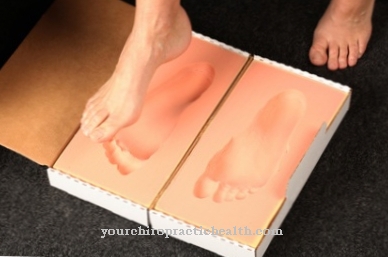If individual teeth are missing in the jaw, the other teeth can shift and change the static bite. There are different dental treatments available to prevent this from happening. One is making one bridge.
What is a bridge?
.jpg)
In dentistry, the term bridge stands for a form of dental prosthesis in which one or more missing teeth are replaced and connected to one another by a bridge member.
In order for a bridge to guarantee sufficient hold, it needs support pillars as anchors, either its own neighboring teeth, tooth roots or implants. A bridge thus consists of three parts: two artificial tooth crowns and a bridge pontic, which are connected to each other and attached to the neighboring teeth. For the crowns, the two abutment teeth must be ground and prepared for the crown.
Shapes, types & types
Dentistry differentiates between different types of bridges, depending on the dentition:
- Cantilever bridges
- Bridges made of all-ceramic or composite
- Jumpers
- Adhesive bridges
- Telescopic bridges
- Implant bridges
- Composite bridges made from tooth and implant
In a cantilever bridge, the pontic is not located between two teeth as is normally the case with a bridge, but at the end of the bridge. Two teeth in front of the pontic must be crowned so that sufficient support is still guaranteed and overload is avoided. It is only suitable as a solution if only a small tooth is missing and needs to be replaced.
Often all-ceramic or composite crowns are used, which can be glued to the tooth with a special plastic and prevent the bridge from coming off prematurely.
An adhesive or Maryland bridge is often used in young patients to replace a missing tooth. It is glued from the inside to the anchor teeth and prevents them from having to be ground.
A telescopic bridge is attached to dental crowns and can be removed if necessary. To do this, teeth have to be crowned. Implant bridges can connect implants in the jaw with one another via dentures. Composite dental implant bridges connect your own teeth with dental implants.
Structure & functionality
Every dental bridge needs supporting pillars to guarantee the hold of the bridge, usually the neighboring teeth of the gap are used for this. However, this solution is only optimal if the anchor teeth themselves are no longer completely intact and already have fillings. If the neighboring teeth are completely intact, too much healthy tooth substance would have to be sacrificed by grinding, and in this case it should be considered, perhaps, to choose a different solution.
Before the bridge can be fabricated, the teeth must be ground and impressions taken so that the bridge can be made in the dental laboratory to fit exactly. For this purpose, impressions are taken of the upper and lower jaw, which sometimes have to be corrected again.
There are different bridges that are constructed differently. In addition to the materials (precious metal, non-precious metal alloy or all-ceramic), the structure also differs. When a tooth needs to be bridged, a bridge consists of 3 parts: two crown abutments with a pontic in the middle.
If several teeth are missing, either implants are necessary as intermediate abutments or a removable telescopic bridge is made. For telescopic bridges, however, a lot of the tooth has to be ground off, as the telescopes require sufficient space. If a bridge is to be placed on implants, implants must first be placed in the jaw, on which the bridge will later be attached. Which type of bridge should be used depends on the individual circumstances of the teeth and mostly also on the financial requirements of the patient.
Bridges generally have the task of replacing missing teeth so that gaps do not change the bite or restrict chewing. Teeth begin to migrate, a bridge stabilizes the row of teeth and ensures that the chewing function is maintained. In addition, it also improves aesthetics and pronunciation.
You can find your medication here
➔ Medicines against tartar and tooth discolorationMedical & health benefits
Dental bridges are a further development of the earlier removable partial dentures. They no longer have to be attached to other teeth with brackets, but are firmly anchored. As a result, they put less strain on the gums and there are no pressure points, as is often the case with the brackets of partial dentures.
Depending on the material used, bridges have a relatively long service life of 10 to 15 years. Because they are firmly anchored, the dentition can be loaded almost naturally again, which is not always possible with missing teeth and not always optimally with prostheses.
Due to the fact that the materials and the adaptation options are getting better and better, bridges can hardly be distinguished from natural teeth today, especially when all-ceramic or ceramic veneers are used.
They are always an advantage over gaps in the dentition, with or without a veneer. However, bridges are relatively expensive because they are technically more complex than removable dentures. But they are in turn cheaper than crowns with implants. A cheaper solution is a bridge without facing, but it is not necessarily the optimal solution in the visible area, as it is very noticeable.
Bridges are a good way to replace one or more missing teeth and thus stabilize the bite, maintain vigorous chewing and, last but not least, have an aesthetic set of teeth.






.jpg)










.jpg)



.jpg)

.jpg)




